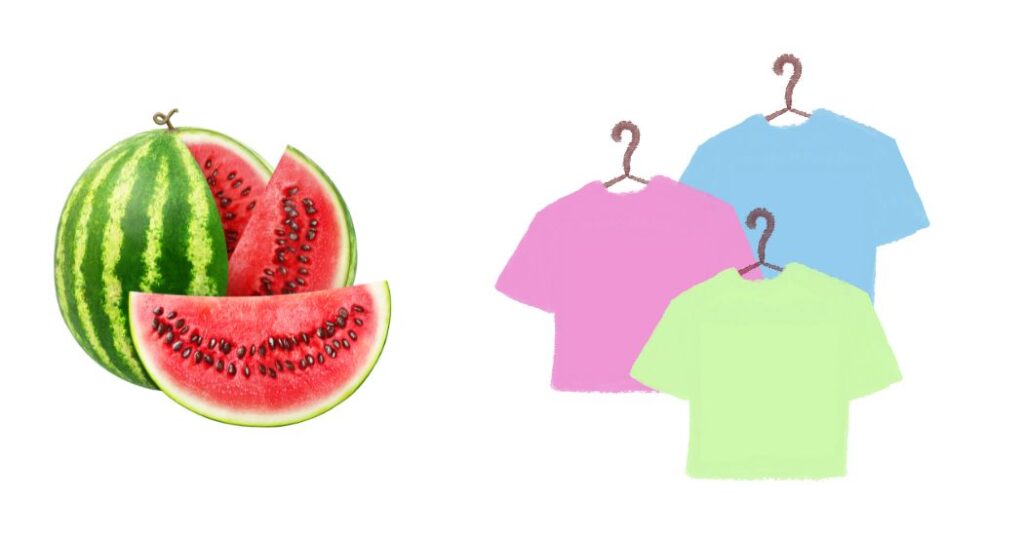Unraveling the Mystery: Does Watermelon Stain Clothes?
Hey there, summer lovers! As the mercury rises, it’s the season of sweet, juicy watermelon. But hold on, before you delve into that ruby red delight, are you worried about your clothes? Do you fret over the notion that watermelon might stain your clothes? If yes, then this blog is just the thing you need to read. We’re going to pull back the curtain on whether watermelon really does leave a mark or if it’s merely a tall tale.
Stains are the nemesis of a perfect outfit, and they’re caused when a substance, say food or drink, sneaks into the threads of your fabric, changing its color. So, with watermelon being largely water, can it penetrate fabric to cause a stain? The straightforward answer is yes. But don’t hang your head yet! There’s more to this than meets the eye.
Yes, watermelon does have a high moisture content which makes it a potential candidate for seeping into fabric, but that doesn’t necessarily translate to a stubborn stain. There are other factors at play. The type of fabric, its treatment, and the watermelon’s temperature can all have a say in the stain game. If you accidentally drop a chilled slice of watermelon onto a light-colored cotton tee and rinse it off with cold water immediately, odds are you’re in the clear. But let’s say some warm watermelon juice spills on an exquisite silk blouse, and you can’t clean it up right away. Well, you might be in for a stain standoff.
The Influence of Watermelon’s Color: A Hidden Culprit?
To add another layer to our stain investigation ‘Does watermelon stain clothes’, let’s consider the watermelon’s color. Our regular red watermelon is rich in lycopene, a pigment notorious for leaving its mark on light fabrics. So, if you’re sporting a crisp white shirt while indulging in a juicy red watermelon slice, you might want to tread carefully or maybe switch to a darker ensemble.
The Action Plan: Preventing and Treating Watermelon Stains
Nobody wants a stain saga, so let’s get into some precautionary measures. The best way to steer clear of watermelon stains on clothes is simple: be careful. Use a napkin around your neck or a plate as your shield against any rogue drips. But what if the inevitable happens and you do get a stain? Don’t break a sweat! Quick action can save the day.
- Blot, don’t rub: Use a clean, damp cloth to gently blot the area. Be sure not to rub as that could make the stain spread and deepen.
- Rinse with cold water: If possible, rinse the stained area with cold water immediately.
- Apply a stain remover: A mixture of cold water and mild detergent can do wonders before tossing the garment in the wash.
- Wash as usual: Wash the garment following the care instructions.
- Check before drying: Make sure the stain is completely gone before drying as heat can set the stain permanently.
- Professional help: If the stain persists, it might be time to call in the pros.
So, does watermelon stain clothes? It certainly can, but it’s no cause for alarm. A little care and swift action can keep your summer wardrobe spotless while you enjoy your watermelon. And remember, even if a stain does sneak in, there are plenty of ways to tackle it. So, don’t let it ruin your fun in the sun!
Related FAQs
1. What type of fabrics are most susceptible to watermelon stains?
While watermelon can potentially stain any fabric, delicate materials like silk and satin are more susceptible. Cotton and other natural fibers may also hold onto the stain if not treated promptly. Synthetic fabrics, on the other hand, tend to resist staining a bit more.
2. Can watermelon stains become permanent?
Watermelon stains can become permanent if not treated promptly and properly. Heat, in particular, can set a stain, making it more difficult to remove. This is why it’s important to address any stains before drying the garment.
3. Is it only red watermelon that can cause stains?
While red watermelon is more likely to cause visible stains due to the pigment lycopene, yellow watermelon could potentially cause stains as well, especially on light-colored fabrics. However, these stains may be less noticeable.
4. Can I use bleach to remove watermelon stains?
Yes, for white, bleach-safe fabrics, bleach can be used to remove watermelon stains. However, for colored fabrics, a color-safe bleach or stain remover should be used instead to avoid discoloring the garment.
5. Does eating seedless watermelon reduce the chances of staining?
While seedless watermelon might be less messy to eat, it doesn’t necessarily reduce the chances of staining. The water content and the pigments in the fruit are the primary causes of stains, not the seeds.
